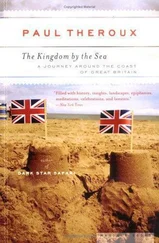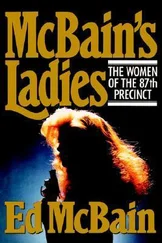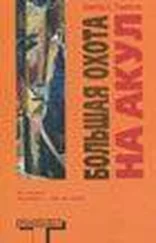He checked the bag next for microscopic traces of hair or fibers or dust which might give some clue to either the killer’s or the victim’s identity, occupation, or hobby. He found nothing of value on the outside surface of the bag.
He slit the bag open with a scalpel and studied its inner surface and bottom with a magnifying glass. In one corner of the bag he found what appeared to be remnants of orange chalk dust. He collected several grains for a specimen, put them aside, and then studied the blood stains on the bottom of the bag.
The average layman might have considered Grossman’s examination absurd. He was, after all, examining a stain that had obviously been left in the bag by the severed hand. What in the hell was he trying to ascertain? That the hand had been in the bag? Everyone knew that already.
But Grossman was simply trying to determine whether or not the stain on the bottom of the bag was actually human blood; and if not blood, then what? There was the possibility, too, that an apparent bloodstain could have mingled with, or covered, another stain on the bag. And so Grossman really wasn’t wasting his time. He was simply doing a thorough job.
The stain was a dark reddish brown in color and, because of the nonabsorbent surface of the bag’s bottom, it was somewhat cracked and chipped, resembling a dried mud flat. Grossman gingerly cut out a portion of the stain, and cut this into two smaller portions that he labeled Stain One and Stain Two, for want of a more imaginative nomenclature. He dropped his two specimens into a 0.9 percent solution of physiologic salt, and then placed them on separate slides. The slides had to stand in a covered dish for several hours, so he left them and began performing his microscopic and spectroscopic tests on the orange chalk he had found in a corner of the bag. When he returned to the slides later that day, he covered one of them with a coverslip and studied it under a high-power microscope. What he saw was a number of non-nucleated discs, and he knew instantly that the suspect blood was mammalian in origin.
He then took the second slide and poured Wright’s Stain onto the unfixed smear, letting it stand for one minute while he timed the operation. Drop by drop, he added distilled water to the slide, waiting for a metallic scum to form on its surface. When the scum had formed, he again consulted his watch, waiting three minutes before he washed and dried the slide.
Using a micrometer eyepiece, he then measured the various cells on the slide. The human red blood corpuscle is about 1/3200 of an inch in diameter. The cell diameter will vary in other animals of the mammalian group, the erythrocyte of the dog — at 1/3500 of an inch — being closest to the human’s.
The specimen Grossman examined under his microscope measured 1/3200 of an inch in diameter.
But where measurement dealt with error in thousandths of an inch, Grossman did not want to take any chances. And so he followed the usual laboratory procedure of using a precipitin reaction after either a chemical, microscopic, or spectroscopic test. The precipitin reaction would determine with certainty whether or not the stain was indeed human blood.
The precipitin reaction is a simple one. If you take a rabbit, and if you inject into this rabbit’s blood a specimen of whole human blood or human blood serum, something is going to happen. The something that will happen is this: an antibody called a “precipitin” will develop in the rabbit’s own serum. This will then react with the proteins of the injected serum. If the reaction is a positive one, the proteins can then be identified as having come from a human being.
The specific reaction to Grossman’s stain was positive.
The blood was human.
When he performed his isoreaction test, he learned that it was in the “O” blood group, and he therefore made the logical assumption that the stain on the bottom of the bag had been left by blood dripping from the severed hand and by nothing else.
As for the bits of orange chalk dust, they turned out to be something quite other than chalk. The particles were identified as a woman’s cosmetic, further identified through a chemical breakdown and a comparison with the cards in the files as a preparation called Skinglow.
Skinglow was a liquid powder base designed to retain face powder in a clinging veil, further designed to add a slight pink glow to very fair skin under makeup.
It was hardly likely that a man would have used it.
And yet the hand in the bag had definitely belonged to a man.
Grossman sighed and passed the information on to the boys of the 87th.
Saturday.
Rain.
Once, when he was a boy, he and some friends had crawled under the iceman’s cart on Colby Avenue. It had been pouring bullets, and the three of them sat under the wooden cart and watched the spikes of rain pounding the cobblestones, feeling secure and impervious. Steve Carella caught pneumonia, and shortly afterward the family moved from Isola to Riverhead. He’d always felt the move had been prompted by the fact that he’d caught pneumonia under the iceman’s cart on Colby Avenue.
It rained in Riverhead, too. Once he necked with a girl named Grace McCarthy in the basement of her house while the record player oozed “Perfidia,” and “Santa Fe Trail,” and “Green Eyes,” and the rain stained the small crescent-shaped basement window. They were both fifteen, and they had started by dancing, and he had kissed her suddenly and recklessly in the middle of a dip, and then they had curled up on the sofa and listened to Glenn Miller and necked like crazy fools, expecting Grace’s mother to come down to the basement at any moment.
Rain wasn’t so bad, he supposed.
Sloshing through the puddles with Meyer Meyer on the way to question the second possibility Kling had pulled from the MPB files, Carella cupped his hand around a match, lighted a cigarette, and flipped the match into the water streaming alongside the curb.
“You know that cigarette commercial?” Meyer asked.
“Which one?”
“Where the guy is a Thinking Man. You know, a nuclear physicist really, but when we first see him he’s developing snapshots in a darkroom? You know the one?”
“Yeah, what about it?”
“I got a good one for their series.”
“Yeah, let’s hear it,” Carella said.
“We see this guy working on a safe, you know? He’s drilling a hole in the face of the safe, and he’s got his safe-cracking tools on the floor, and a couple of sticks of dynamite, like that.”
“Yeah, go ahead.”
“And the announcer’s voice comes in and says, ‘Hello there, sir.’ The guy looks up from his work and lights a cigarette. The announcer says, ‘It must take years of training to become an expert safe-cracker.’ The guy smiles politely. ‘Oh, I’m not a safe-cracker,’ he says. ‘Safe-cracking is just a hobby with me. I feel a man should have diversified interests.’ The announcer is very surprised. ‘Not a safe-cracker?’ he asks. ‘Just a hobby? May I ask then, sir, what you actually do for a living?’ ”
“And what does the man at the safe answer?” Carella said.
“The man at the safe blows out a stream of smoke,” Meyer said, “and again he smiles politely. ‘Certainly, you may ask,’ he says. ‘I’m a pimp,’ “ Meyer grinned broadly. “You like it, Steve?”
“Very good. Here’s the address. Don’t tell jokes to this lady or she may not let us in.”
“Who’s telling jokes? I may quit this lousy job one day and get a job with an advertising agency.”
“Don’t do it, Meyer. We couldn’t get along without you.”
Together, they entered the tenement. The woman they were looking for was named Martha Livingston, and she had reported the absence of her son, Richard, only a week ago. The boy was nineteen years old, six feet two inches tall, and weighed 194 pounds. These facts, and these alone, qualified him as a candidate for the person who had once owned the severed hand.
Читать дальше





![Ричард Деминг - Whistle Past the Graveyard [= Give the Girl a Gun]](/books/412176/richard-deming-whistle-past-the-graveyard-give-t-thumb.webp)






